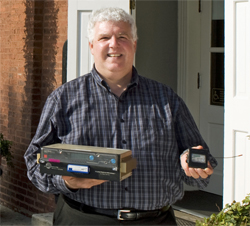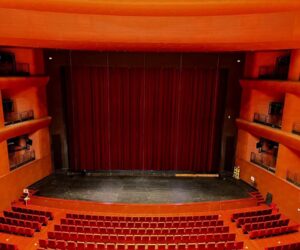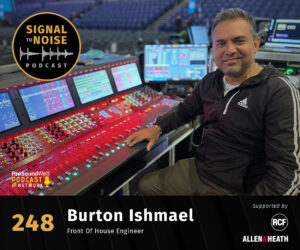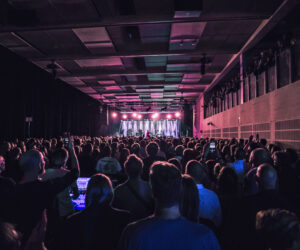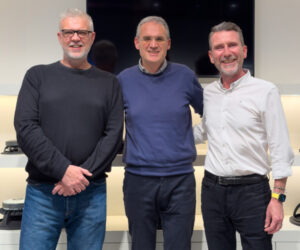With more degree programs and specializations than any other art and design university in the U.S., the Savannah College of Art and Design (SCAD) encompasses a dedicated program for sound design students that includes opportunities to work with dialog, sound effects, and foley in a setting that incorporates many of the latest technological advancements.
Production of student films approaches 40 projects in a single quarter, so the school’s equipment receives heavy use.
Peter Damski, CAS, is Professor of Sound Design at SCAD and continues to work as an independent production sound mixer. A veteran of Hollywood’s television production community, his credits include the popular sitcoms “Mad About You” and “Will and Grace”.
Since joining SCAD’s faculty at the start of the 2008-2009 academic year, he has been teaching Introduction to Sound Design, Location Sound, and has developed a course in Advanced Production Sound, which encompasses doing sound for sports venues and TV stations, plus theatrical work.
“I discovered that the equipment being used for location sound work was quite antiquated,” notes Damski. “As a result, the students were being handicapped by gear that wasn’t functioning up to par and this negatively impacted the way they approached their projects.
“A perfect example of this was wireless equipment that readily suffered from RF interference and limited range,” he continues. “We were in dire need of new equipment that accurately reflected the type of gear being used in today’s production environment. After receiving the green light to purchase new equipment, I created four ‘kits’ that would enable the students to handle a variety of location sound tasks. These kits included boom mics, wireless mics, cables, and everything they would typically require for a wide range of projects.”
For wireless microphones, Damski purchased four Lectrosonics VR Field wideband receivers. Each battery-powered modular receiver system was stocked with three VRS modules—providing room for expansion upwards to a total of six channels per unit.
On the transmitter side of the equation, he purchased twelve Lectrosonics SM Series beltpack transmitters for lavaliere microphones and two UH400a plug-on transmitters for use with conventional microphones. All of this equipment utilizes Lectrosonics’ Digital Hybrid Wireless Technology.
“I bought this gear to accurately reflect the nature of today’s location sound work,” explains Damski. “I knew from my own experience it would serve the school well and it was important for me to introduce products of this caliber to the students.
“We created two timecode kits utilizing Sound Devices 702T field recorders with PSC (Professional Sound Corporation) Alphamixers, and two non-timecode kits using Sound Devices 722 recorders with Wendt NGS X4 audio mixers.
“We have an astonishing workload here, so the equipment is in constant use. I’ve given my students the option to call me any day between 7 AM and 10 PM should they encounter issues with the equipment. Thus far, I haven’t received a single call about the Lectrosonics gear. I believe this says wonders about Lectrosonics’ overall performance.”
Damski was equally enthusiastic about Lectrosonics range and ease of use. “Previously, everyone complained about the limited range of their wireless gear,” said Damski. “I wanted to show the true capabilities of Lectrosonics equipment, so I demonstrated this in class by putting on a transmitter and taking a nice long walk around buildings and down the street a good 200 yards or so while the students listened in on the receivers back in the classroom. They could clearly hear every word I was saying.
“This is an important illustration of how good wireless equipment should work. Similarly, defining frequencies is fast and easy with the Lectrosonics gear, so it removes any real complexity from using the equipment.”
For additional information about the Sound Design programs at the Savannah College of Art and Design, go to www.scad.edu/sound-design/.


